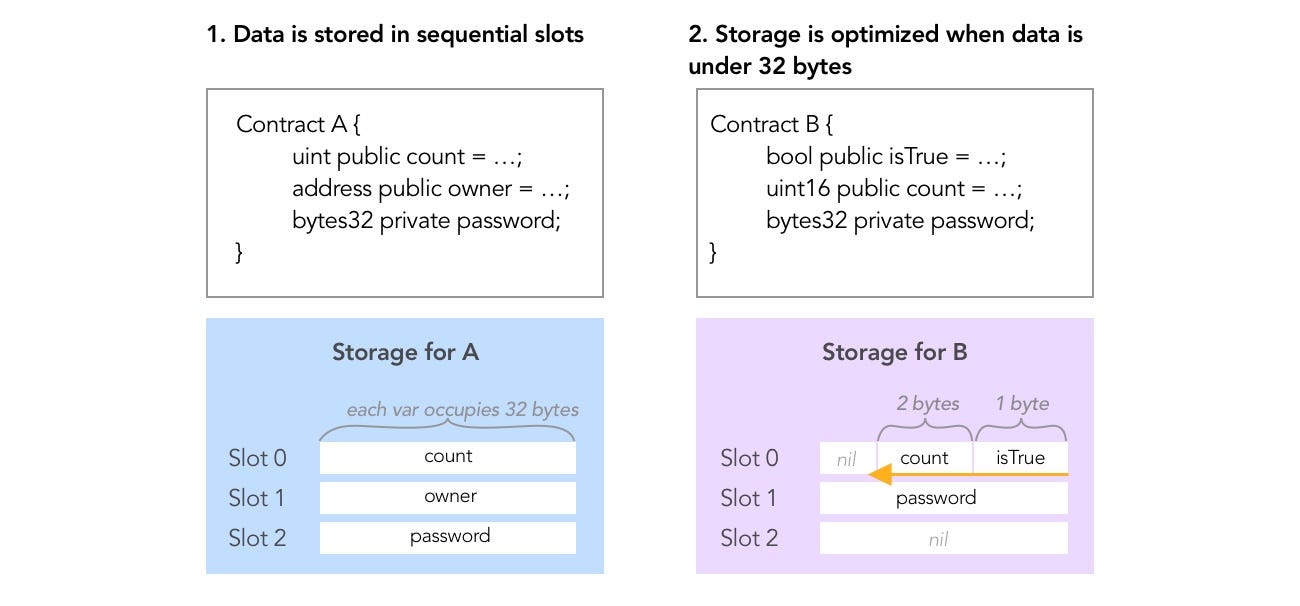-
Notifications
You must be signed in to change notification settings - Fork 4
08. Vault
r1oga edited this page Oct 28, 2022
·
1 revision
Unlock Vault contract.
The unlock function relies on a password with a private visibility.
There is no real privacy on Ethereum which is public blockchain.
The private visibility parameter is misleading as all data can still be read.
Indeed the contract is available, so an attacker can know in which storage slot a variable is stored in and access its value manually using getStorageAt.
- storage: persistent data between function calls and transactions.
- Key-value store that maps 256-bit words to 256-bit words.
- Not possible to enumerate storage from within a contract
- Costly to read, and even more to initialise and modify storage. Because of this cost, you should minimize what you store in persistent storage to what the contract needs to run. Store data like derived calculations, caching, and aggregates outside of the contract.
- A contract can neither read nor write to any storage apart from its own.
- memory ~ RAM: not persistent. A contract obtains a freshly cleared instance of memory for each message call
Data stored is storage in laid out in slots according to these rules:
- Each slot allows 32 bytes = 256 bits
- Slots start at index 0
- Variables are indexed in the order they’re defined in contract
contract Sample { uint256 first; // slot 0 uint256 second; // slot 1 } - Bytes are being used starting from the right of the slot
- If a variable takes under < 256 bits to represent, leftover space will be shared with following variables if they fit in this same slot.
- If a variable does not fit the remaining part of a storage slot, it is moved to the next storage slot.
- Structs and arrays (non elementary types) always start a new slot and occupy whole slots (but items inside a struct or array are packed tightly according to these rules).
- Constants don’t use this type of storage. (They don't occupy storage slots)
Knowing a contract's address and the storage slot position a variable is stored in, it is possible to read its value value using:
- Read contract to find out the slot
passwordis stored in:
-
lockedbool takes 1 bit of the first slot index 0 -
passwordis 32 bytes long. It can fit on the first slot so it goes on next slot at index 1
- Read storage at index 1
- Pass this value to the unlock function
- Nothing is private in the EVM: addresses, timestamps, state changes and storage are publicly visible.
- Even if a contract set a storage variable as
private, it is possible to read its value withgetStorageAt - When necessary to store sensitive value onchain, hash it first (e.g with sha256)
